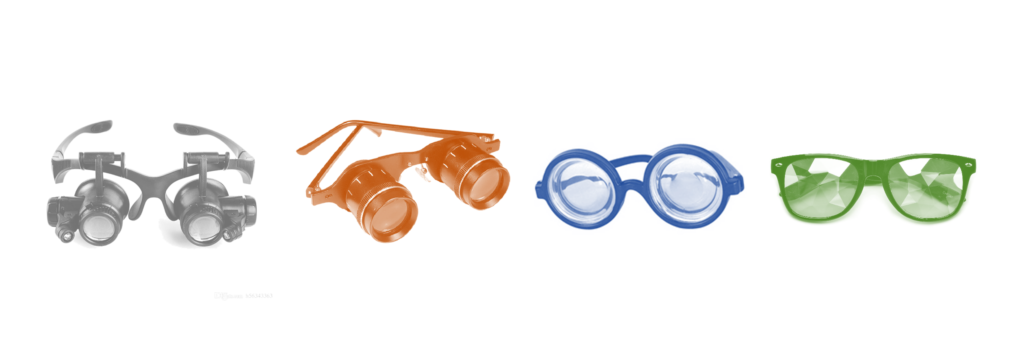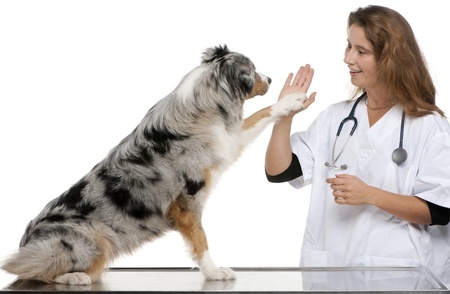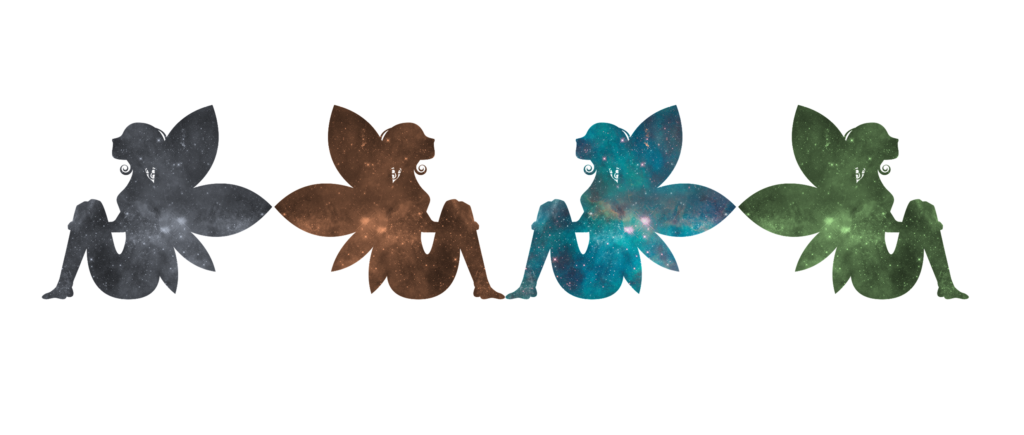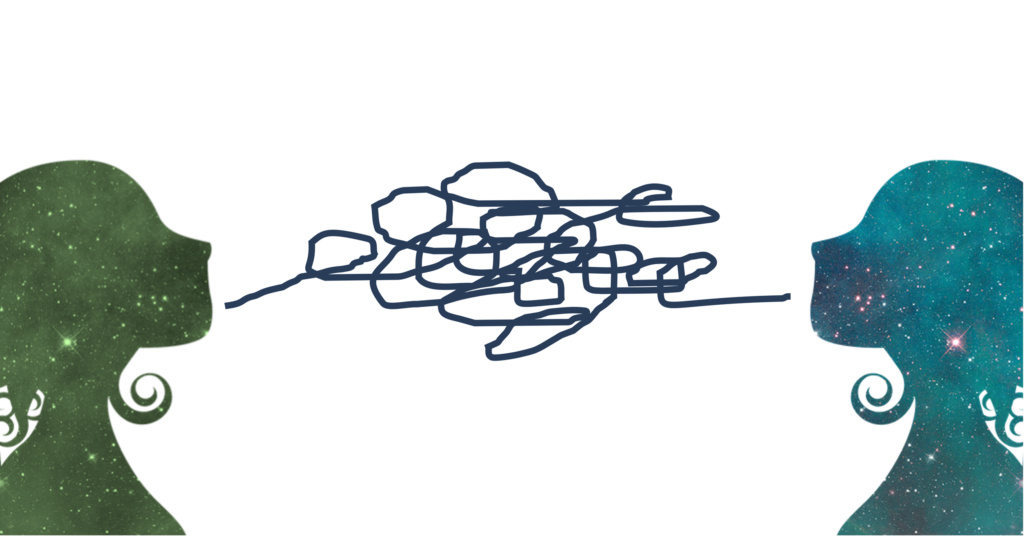Updated August 2023
Once upon a time there was a princess.
She was quite furry and partly covered in scales, and also had a beak, and so she was named Animal.
Her last name was Welfare.
Animal Welfare had four fairy godmothers, who all gave her precious gifts.
The fairy godmothers came from different scientific realms, and they were called Applied Ethology, Veterinary Medicine, Affective Neuroscience and Applied Behaviour Analysis – and each of them offered priceless, irreplaceable gifts to Animal Welfare.
And here’s the twist of this fairy tale:
The fairy godmothers all wore unique glasses – they would each see the world through a different lens; some spectacles were like myopic microscopes, others resembled binoculars. The Godmothers were of different age and nationality, and so didn’t speak the same native language.

Also, they didn’t get along very well; whenever they met, there were squabbles. Heated discussions about whose gift contributed the most to Animal Welfare, and whose approach was the most humane.
Condescending comments.
Eye rolling.
Chance meetings would usually end up with some of them storming off, affronted, frustrated and exasperated at one another.
Animal Welfare was sad, because she loved them all and wanted them to get along better. So she sat down to think about what was at the root of the disagreements.
In some cases, she realized, the conflict was due to language barriers. The same word would mean vastly different things to the different fairy godmothers.
In some cases, it was due to cultural differences. Things were simply done differently in different scientific realms.
And in some cases, it was because the fairy godmothers didn’t understand much about the particular gifts of the others. The lenses through which they saw the world were simply too different.
And one day, Animal Welfare had had enough. She stomped up to them and said: “Listen, I’m tired of your bickering. This conflict isn’t helping me at all – quite the opposite! Tonight I’m throwing a party, and I invite you to sit down and learn each other’s language, and try on each other’s glasses!!”
And so they did.
There was fabulous food, music and dancing. And the fairy godmothers stayed up all night, learning each others’ languages, laughing over silly misunderstandings because of culture differences, and trying on each other’s glasses. And that night, after some karaoke, dancing and perhaps a bit too much to drink, after learning from each other, they discovered new insights – new gifts – that they gave to Animal Welfare.
Animal Welfare flourished, and grew some mighty new wings thanks to the magic from the synergy of the combined skills of her fairy godmothers.

And so, they lived happily ever after. Dancing, talking, and marveling at how extraordinarily beautiful the world looked when combining all the spectacles into one big prism.
The end.
***
Or the beginning.
I’m guessing, if you’ve read this far, that you might be curious what the different fairy godmothers, the different scientific disciplines, all have to contribute to Animal Welfare.
Who knows, maybe there’ll be some spectacles you haven’t tried on yet?
I deeply encourage you to examine the other glasses too, if you haven’t.
Let’s pick them up and have a look. And I’ll give you fair warning: since I’m an ethologist myself, my world tends to be tinted through those glasses, despite my best efforts to take them off.
Applied Ethology.
In my mind, the main value of Applied Ethology to Animal Welfare is that it can help us set up optimal environments – this perspective helps ask the right questions when planning and preparing an area for the arrival of a new animal.
As ethologists, we make sweeping generalizations about species or populations of animals, and we make educated guesses how best to care for them in a captive environment. Some of the most important questions that might be asked are:
- Is this a predatory or prey species?
- Which senses does it use to perceive the world, which type of stimulus is it likely to attend to, and what types of behaviours – and in which order – can be expected when foraging or hunting?
- How does it utilize its habitat; is it arboreal, terrestrial, or aquatic?
- Have any behavioural needs been identified for this particular species?
- Which social structure or dynamics might we expect to be optimal for this species? How about group size? Migration patterns: do females or males leave the natal group – or both?
- What behavioural adaptations might we expect when animals become fearful? Do they run? Climb a tree? Burrow?
The answers to these questions will help us arrange an environment that’s likely to provide the animal with an interesting, safe and enriched environment that gives the opportunity of carrying out natural behaviour patterns.
In my opinion, the primary gift of Applied Ethology to Animal Welfare is in preventing unwanted behaviour, as well as providing opportunities for a wide range of natural behaviours.
Veterinary Medicine.
To me, the obvious value of Veterinary Medicine to Animal Welfare regards the physical and physiological welfare of the animal. But some of the latest findings in the area of Veterinary Medicine is about the effect of medical conditions and physiological imbalances on behaviour.
- Pain influences behaviour – in dogs, it’s been found that noise phobias are often associated with pain. Address the pain, solve the behavioural problem.
- Nutrition influences behaviour – by changing the diet, behaviour may change.
It seems there’s a paradigm shift going on in the veterinary community, and it stems from this short and sweet realization:
Behaviour is medicine.
Veterinarians have started to act on the fact that behaviour influences physiology, which in turn impacts behaviour – and explains many challenging behaviours. For instance, the Fear Free approach is spreading through the veterinary community, providing better veterinary care, resulting in happier customers and animals who actually look forward to their veterinary visit.
I believe that the primary gift of Veterinary Medicine to Animal Welfare is to address physical / physiological welfare, and through this approach prevent and diminish challenging behaviour.

Applied Behaviour Analysis (ABA).
It is my conviction that the primary value of ABA to Animal Welfare is to help resolve challenging behaviour on an individual level.
The other three scientific perspectives mentioned here all make more or less sweeping generalizations about populations of animals. ABA looks at individuals – and how a specific animal behaves in a specific context.
From the ABA perspective, we might ask questions like:
- What function does a particular behaviour serve in the context in which it’s shown, and what learning history is involved?
- What is the outcome of the behaviour? What does this individual animal obtain, or get away from, by doing the behaviour?
- What triggers the behaviour? What about the setting, or events or stimuli present in the environment, makes the animal choose to show that particular behaviour at that particular moment in time?
- How can we change the environment to change behaviour? Can we change the outcome, the consequences, of the behaviour? Can we change the environment, remove the triggers? Add other triggers or other outcomes to entice the animal to choose another, more desirable behaviour?
In my view, the main gift of ABA to Animal Welfare is that it helps us understand behaviour on an individual level, and gives us the tools to pinpoint and change specific undesired behaviour and facilitate desirable behaviour.
Affective Neuroscience.
I think that the value of Affective Neuroscience to Animal Welfare is to help get confident, resilient, happy animals who thrive with people. That’s not to say that you can’t achieve this outcome by viewing behaviour through the other lenses, but this perspective helps give a laser focus on emotions and relationships in particular.
When wearing the Affective Neuroscience glasses, we might ask questions like:
- What do positive and negative emotional states generally look like in this species (or individual), and what types of stimuli or situations generally elicit them?
- What is the animal’s general mood state, seen over, say, a 2-week interval?
- What type of parental care is given, and how might we optimize environments so that caregivers can do the best job possible of raising their young? How can we carry out weaning procedures to minimize trauma? What is the impact of social separation – and how can we mitigate potentially harmful effects? Is there evidence of attachment mechanisms at play in this species?
- How can we encourage playful and exploratory behaviour, to help optimize brain development?
- How can we prevent and diminish fearful and aggressive behaviour?
- How can we help animals build strong relationships to relevant humans or animals?
To me, the gift of Affective Neuroscience to Animal Welfare is the realization that emotional experiences influence brain development, and by addressing this we can help shape the young animal’s personality and moods. His social skills. Whether he becomes confident or withdrawn. Explorative and resilient, or easily stressed and fearful.
This, in my opinion, is one of the most overlooked scientific perspectives, and indeed, the importance of this perspective with regards to Animal Welfare is often underestimated.
What’s more important, the practical application of this science to Animal Welfare is not that well developed. Also, this young research area is still going through some serious growing pains – neuroscientists disagree on the mechanics of emotional expression. As an aside, this disagreement is causing ripples that has potential impact on Animal Welfare, and so I feel compelled to take sides and cast my vote.
***
At this point I realize that some readers may be discontentedly grunting that I totally misrepresented their branch of science. And that might certainly be true: these short descriptions barely scratch the surface of the scope and depth of these scientific disciplines, and although I’m reasonably well acquainted with them, as an associate professor of ethology I’m very likely heavily biased.
In this blog post, I’ve tried to condense what is to me the most important contribution from each of these disciplines to the topic of Animal Welfare – and it’s my hope that you might get interested enough to explore the lenses that you might be more unfamiliar with.
Language barriers.
In my experience, most of the language confusion arises between ABA practitioners and the other three realms. Here’s where I’ve seen most of the dissention, at least. A few examples:
- “Function of behaviour” in ethology is about evolutionary adaptation. It’s about how a particular behaviour helps animals survive and reproduce better than those that don’t show that behaviour.
- “Function of behaviour” in ABA is about specific contexts. How does a particular behaviour serve an animal here and now, leading to desired outcomes for that particular individual; achieving reinforcers or escaping or avoiding punishers.
Also, there’s this disagreement about labelling. In some disciplines, labelling is part of the job description. In ABA, it’s definitely not.
- The ethologist will use labels like “aggressive”, or “dominant”. This is a way to group different types of behaviour with similar outcomes – a way to get meaningful data on a population level. For instance, an ethologist may say things like “aggressive behaviour in the population was more frequent when food was patchily distributed than when it was evenly distributed”.
- The ABA practitioner will avoid terms like “aggressive” or “dominant”. They’ll rather describe the actual behaviours, using verbs. What is the animal actually doing? They may say things like “If Donald finds a food patch, and snarls and lunges at the other individuals, then he’ll get all the food”.
The ethologist and the ABA practitioner may arrive at the same conclusion, that maybe something should be done about how food is distributed to a specific group of animals, but they’ll use different terminology to describe the problem, they may choose different solutions, and they’ll evaluate the outcome of their intervention differently, using different statistical methods.
Combining the lenses.
Before I forget, we should acknowledge that people will define Animal Welfare differently.
I also feel I need to temper my description of the different perspectives by saying that although I’ve listed these 4 scientific approaches to Animal Welfare as if they were exclusive, they’re really not.
There IS overlap, and indeed, some of the questions I’ve suggested under one heading might also be asked under the umbrella of another scientific discipline. I’ve merely placed the question under the heading where it makes the most sense for me personally – and again, I am an evolutionary biologist. Someone with another background might choose to group those questions differently – or indeed replace them with other questions.
It’s my deepest conviction that it’s through combining the lenses that the true magic happens. It’s when we draw from the gifts of all four fairy godmothers, and their different scientific perspectives, that we can get the deepest understanding of an individual animal’s need here and now, today, in this context.
And in order for this to happen, we must start picking up each others’ glasses, and trying them on. Learning about the different scientific disciplines beyond the bare bones that I presented (and again, to a degree, I’m sure, misrepresented) here.
Perhaps, indeed, we should throw that party, with funny hats, silly games, karaoke and dancing?
After all, having fun improves welfare – for humans as well as for other animals! And who knows, there might be other, as of yet undiscovered, fairy godmothers out there!
***
Found this interesting? I’m passionate about animals, learning, behaviour and welfare, and I cover all the scientific perspectives involved in Animal Welfare except Veterinary Medicine in my teachings.
Among my extensive online courses, it is in the Resolving Challenging Behaviour course that I go into these different perspectives the most thoroughly.
Meanwhile, sign up below and I’ll keep you posted about future blog posts, free webinars, mini-courses and masterclasses, silly experiments as well as when my full courses open for admission!


19 replies on “Animal Welfare and her fairy godmothers”
Love it!
As you know, I am already a convert to this train of thought.
I find that using the tools that I have acquired whilst studying with you Karolina they have most certainly enabled me to expand my previous ‘Behaviour ‘ knowledge. Taking me to a different level , for which I thank you for opening my eyes to other disciplines that have a place in my learning journey.
Regards
Suzy
Really love this…in helping clients I really try to blend my limited knowledge from studying all four areas to some extent. You have captured my philosophy, intent and goal perfectly, thank you!!!
So glad to hear that, Lesley! 🙂
This is the best fairytale I have ever read. It has made so much so clear to me. I have been passionate about expanding my knowledge since becoming a qualified dog trainer, but have often felt so confused trying to make it all fit together.
This is why! Thank you.
Why thanks Debra! So glad to hear that it resonated with you! 🙂
Love this! Have shared multiple times in multiple places.
Great to hear that – thank you! 🙂
I really enjoyed the way out outlined this, Karolina. In my horse training books I try to bring these elements together in a way that makes sense for the average person who just wants to have fun and be safe with their horse or horses.
thanks Hertha! 🙂
Great article. Yours is my favorite animal sciences blog to date.
Thanks, glad you found this useful! 🙂
How about distant cousin: Popular opinion. Owners think they know what’s best. Vets in the trenches base some advice or make decisions based on old what’s best ideas unrelated to science or anything current. Bleeding heart people influence via save them all with no science to back them up (not that science in temperament tests is helpful).
Ah, “common sense”… is not so common, it’s typically very personal! 🙂
Oh Karolina, I loved this and I loved your fairy tale. I am such a baby in all of this but I so agree we need to look and learn from each other with open hearts and minds. I am currently doing your emotions course for this exact reason. I have been learning about ABA and will do another study course in Jan 2020 but wanted to learn a little bit from one of the other science sisters, so here I am.
Glad you found it useful, Karen! 🙂
I really liked the series of questions you asked under each heading. It helped me to understand better the four different approaches. I am sure that some of the ‘heat’ between the various schools/fields is produced by the lack of a common language–a failure to communicate. But I don’t think that explains all of the conflict. Dog behaviourists for example, while they speak a common language of instrumental and classical conditioning, don’t share a common set of beliefs of how to train dogs.
In my experience, that’s due to the “glasses”. Learning their perspective is really interesting!
Yes absolutely agree. But you are a university academic. You were trained to be open minded, willing to listen to other points of view, evaluate, and then challenge arguments with an argument. Significantly, It is hard even for some/most academics to become well acquainted with other schools of thought/disciplines. The structure of most undergraduate programs is not multi-disciplinary . And once the student gets to the post-graduate level, the incentive structure is to become an expert in a specific area. Publish, don’t spend your time reading what others have to say in other disciplines.
Hear, hear. I think this single-minded pursuit of publications lead to a focus that’s often too narrow. Personally I’ve had some of my most significant heureka moments when combining perspectives – such synergy!